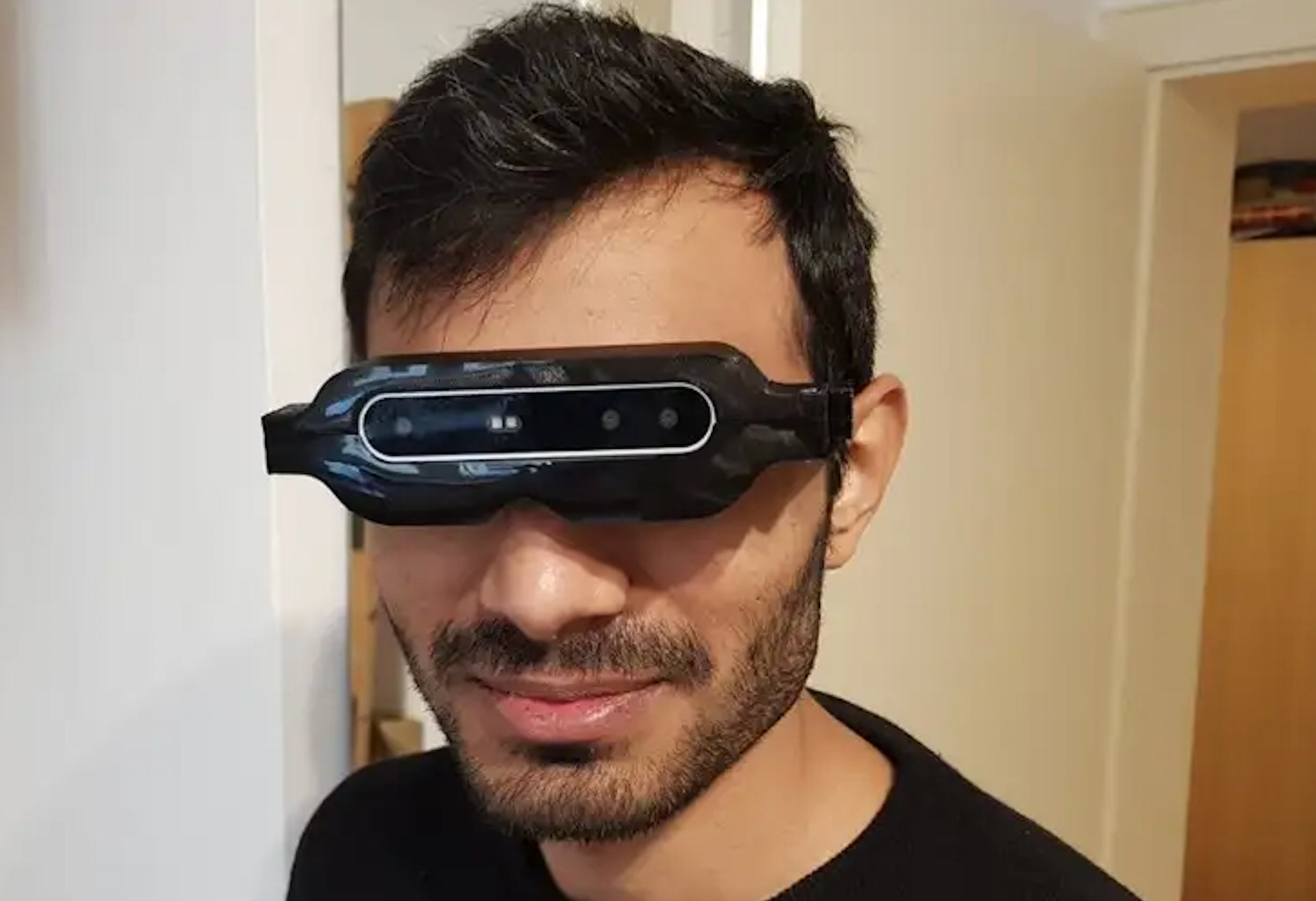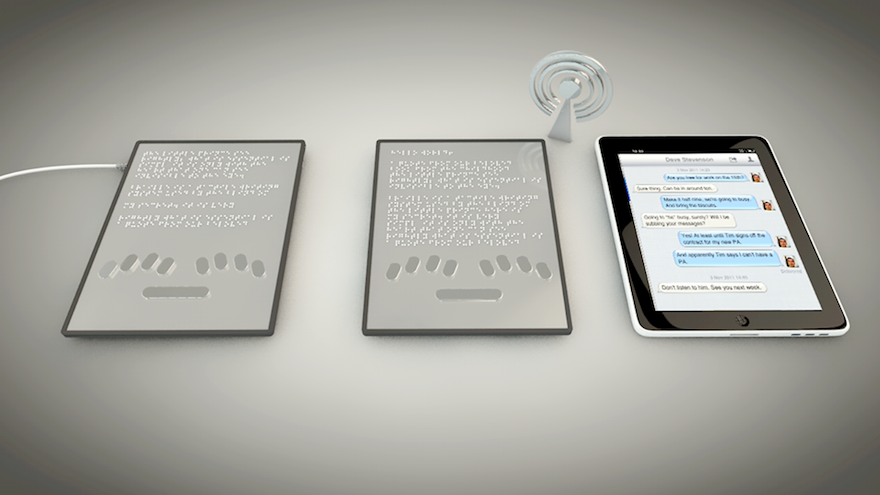Empowering Freedom With Assistive Technology for the Blind
The assimilation of assistive technology right into the lives of individuals with aesthetic problems represents a considerable improvement in promoting self-reliance and self-sufficiency. From innovative screen visitors to sophisticated wise canes, these devices not only improve day-to-day navigation and interaction yet likewise equip individuals to involve meaningfully in different facets of life. As we check out the myriad advantages and real-world applications of these technologies, it ends up being crucial to check out the underlying factors that add to their performance and the possibility for future advancements in this crucial area.
Summary of Assistive Technology

The advancement of assistive technology is based in concepts of inclusivity and empowerment. Developments in software program, hardware, and sensory enhancements supply users with alternatives customized to their specific requirements. From screen viewers that convert message to speech, to responsive tools that share info via touch, these devices change the way individuals involve with their environments.
In enhancement to practical applications, assistive modern technology fosters greater social addition and involvement in numerous markets, including education and work (Wearable technology for low vision). As research and development remain to develop, the potential for assistive innovation to better enhance the lives of visually impaired individuals remains encouraging, leading the means for an extra equitable society where everybody can flourish
Kinds Of Assistive Tools
A variety of assistive gadgets have arised to support individuals with aesthetic impairments, each developed to satisfy specific demands and boost daily functioning. These gadgets range from low-tech remedies to modern technologies, offering varied options for individuals.
Low-tech tools consist of magnifiers and large-print products that assist in analysis and writing. Braille devices, such as Braille stylus pens and slates, make it possible for tactile analysis and interaction. Alignment and wheelchair aids, like white walking canes, assist users navigate their setting safely.
On the higher end of the range, electronic zoom systems and display readers offer substantial support. Digital magnifiers allow individuals to enlarge message and images on displays, while screen readers convert electronic web content right into synthesized speech, assisting in access to information on computer systems and smartphones.
Smartphone applications additionally play a critical function, giving functions like text recognition and navigation aid. Wearable modern technology, such as smart glasses furnished with enhanced reality, is becoming an encouraging device to boost situational recognition.
Benefits of Assistive Innovation
The combination of assistive innovation substantially enhances the top quality of life for people with aesthetic impairments. These modern technologies equip users by promoting independence, enabling them to browse their environments better and do day-to-day tasks with higher ease. Display visitors and magnifying software permit people to gain access to digital details, fostering academic and specialist possibilities that may have formerly been out of reach.
Furthermore, assistive tools such as clever walking canes and GPS applications supply real-time navigation aid, enhancing mobility and safety and security. This increased freedom not just boosts self-confidence but likewise urges social interaction, enabling individuals to get involved even more completely in their communities.
Assistive innovation additionally facilitates interaction, aiding individuals attach with others with voice recognition and text-to-speech applications. This capacity is crucial for preserving connections and accessing vital details.
Additionally, the personalization choices available with many assistive technologies make sure that individuals can customize tools to their specific demands, additionally boosting usability and performance. Overall, the advantages of assistive modern technology for people with aesthetic impairments are extensive, advertising an extra inclusive society where every person can pursue their goals and ambitions.
Study and Success Stories
Highlighting the transformative effect of assistive technology, countless study highlight just how individuals with aesthetic disabilities have efficiently incorporated these devices into their every day lives. One engaging example entails an university trainee who used display analysis software to browse scholastic products and on-line resources efficiently. This innovation not only facilitated her education and learning yet likewise boosted her self-confidence in taking part in discussions and group projects.
Another study features an expert who utilizes a smartphone application made for navigating and item acknowledgment. By utilizing try this website this application, he has actually gained back freedom in both his individual and workplace, permitting him to commute separately and engage with coworkers better.
Furthermore, a retiree shared her experience with braille e-readers, which enabled her to access a large variety of literary works and stay attached with her area via publication clubs.
These success tales underscore the crucial role of assistive innovation in promoting independence, boosting top quality of life, and advertising social combination for individuals with visual impairments (Voice-activated assistive devices). By embracing these cutting-edge tools, individuals can conquer difficulties and seize possibilities that add to their personal and professional fulfillment

Future Patterns in Assistive Innovation
Innovation in assistive technology is poised to redefine the landscape of support for individuals with aesthetic impairments. Arising trends stress the assimilation of synthetic intelligence (AI) and artificial intelligence, which improve the functionality of tools that help with navigation and info ease of access. As an example, AI-driven applications are now capable of interpreting aesthetic data in real-time, making it possible for individuals to involve with their atmosphere more individually.
Additionally, the advancement of wearable innovation is progressing quickly. Smart glasses furnished with augmented reality (AR) can give audio summaries of surroundings, transforming just how individuals engage with public spaces. These gadgets not only promote freedom yet also foster social incorporation.
Furthermore, the Internet of Things (IoT) is making homes smarter, enabling for smooth connection in between everyday appliances and assistive devices. This connectivity equips customers by allowing automated responses and voice-activated controls tailored to individual requirements.
Final Thought
In conclusion, assistive innovation plays an essential role in encouraging people with aesthetic problems by additional info enhancing their independence and interaction with their environments. The varied variety of applications and tools readily available not just assists in navigation and communication yet also promotes social assimilation and possibilities for personal and expert development. As improvements proceed in this field, the possibility for improving the top quality of life for those with aesthetic disabilities will certainly expand, fostering higher autonomy and empowerment.
